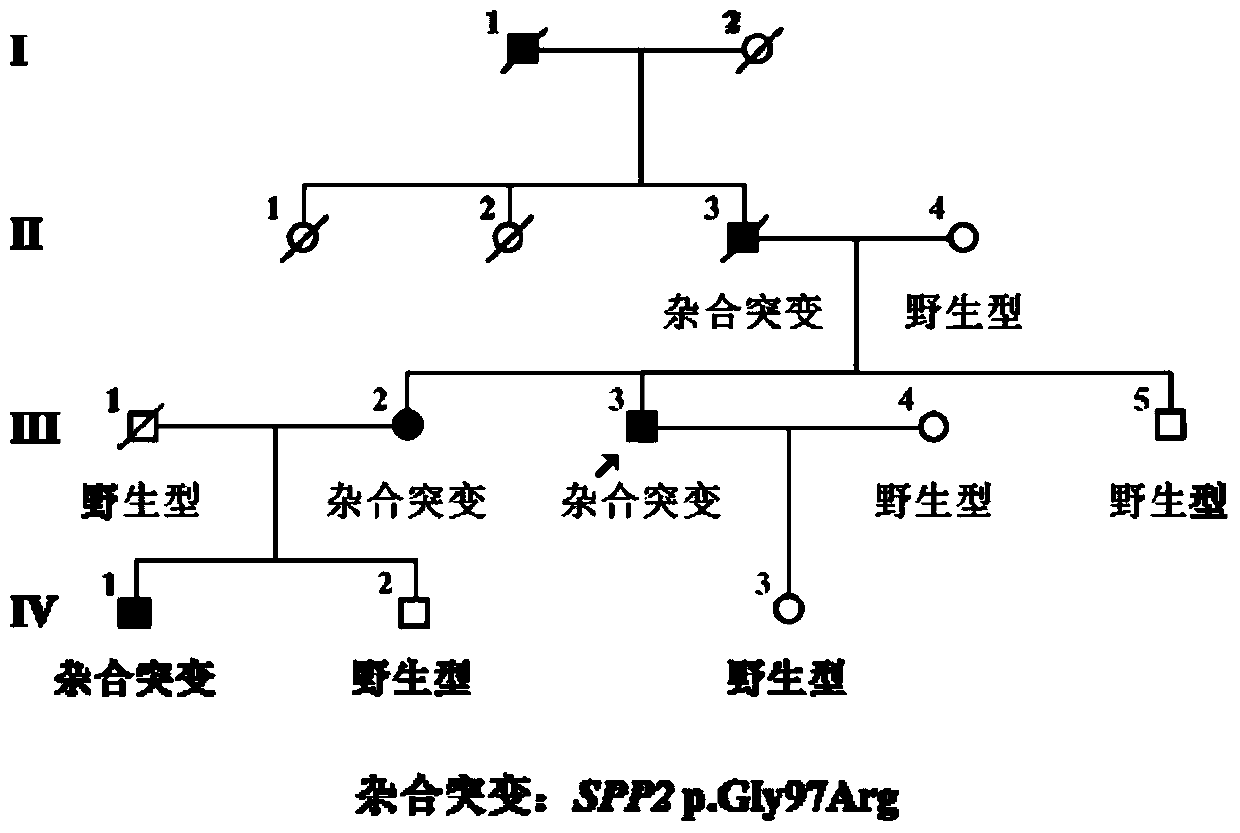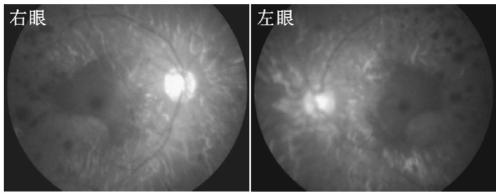A pathogenic mutation of hereditary retinitis pigmentosa and its detection reagent
A technology for retinitis pigmentosa and degenerative diseases, which is applied in the field of pathogenic mutations and detection reagents of hereditary retinitis pigmentosa diseases, can solve problems such as no report, difficulty in analyzing small families and sporadic cases, and screening out causative genes.
- Summary
- Abstract
- Description
- Claims
- Application Information
AI Technical Summary
Problems solved by technology
Method used
Image
Examples
Embodiment 1
[0052] A four-generation family with retinitis pigmentosa (RP) was tested for mutations in the SPP2 gene.
[0053] experimental method:
[0054] 1. Collection of clinical resources of the family and establishment of a genetic resource bank:
[0055] The clinical data and blood samples of each member of the family were collected, see the family diagram figure 1 . Clinical data mainly include personal medical history, family history, best corrected visual acuities (BCVAs), slit lamp examination, fundus photography, color vision examination, visual field examination (Humphrey perimetry), visual evoked potential detection (visual-evokedpotentials); VEP), full field electrophysiology (electroretinography; ERG), fundus fluorescein angiography (FFA) and optical coherence tomography (optical coherence tomography; OCT), etc. The blood genomic DNA of each family member was extracted with a blood genomic DNA extraction kit (Qiagen, Hilden, Germany).
[0056] 2. Discover the pathogeni...
Embodiment 2
[0087] Functional research was carried out on the pathogenic gene detected in Example 1. Here, the new mutation p.Gly97Arg of the SPP2 gene detected above was taken as an example. In addition, on the basis of previous studies, we selected and constructed another highly suspected possible pathogenic mutation of the SPP2 gene, p.Gly29Asp, and our experimental results confirmed that this mutation is similar to p.Gly97Arg mutation in pathogenicity.
[0088] experimental method:
[0089] 1. Conservative analysis:
[0090] Using NCBI HomoloGene database ( http: / / www.ncbi.nlm.nih.gov / homologene ) Conservative evaluation and prediction of the screened mutations in multiple species.
[0091] 2. Predict the pathogenicity of mutations based on SIFT and PROVEN values:
[0092] Using two mainstream online prediction software: SIFT Human Protein DB ( http: / / sift.bii.a- star.edu.sg / ) and PROVEAN (v.1.1.3; http: / / provean.jcvi.org / index.php), predict the impact of missense mutations o...
PUM
 Login to View More
Login to View More Abstract
Description
Claims
Application Information
 Login to View More
Login to View More - Generate Ideas
- Intellectual Property
- Life Sciences
- Materials
- Tech Scout
- Unparalleled Data Quality
- Higher Quality Content
- 60% Fewer Hallucinations
Browse by: Latest US Patents, China's latest patents, Technical Efficacy Thesaurus, Application Domain, Technology Topic, Popular Technical Reports.
© 2025 PatSnap. All rights reserved.Legal|Privacy policy|Modern Slavery Act Transparency Statement|Sitemap|About US| Contact US: help@patsnap.com



